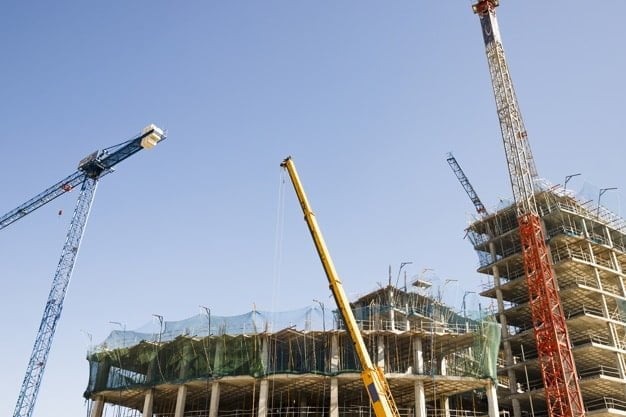The Most Influential Construction Materials of All Time
by Mashum Mollah Real Estate Published on: 26 July 2019 Last Updated on: 25 September 2024

The technologies behind the building efforts of humans have come a long way since the first days of ancient civilizations. Our modern construction capabilities exceed those that were available even a few decades ago and progress is always being made as researchers push the boundaries with fresh solutions to age-old problems.
That being said, there are some materials that have remained relevant for decades, centuries or even millennia. Here are just a few of the most influential entries into the construction pantheon.
The Most Influential Construction Materials of All Time:
Bricks:
The material which has arguably had the most enduring impact on construction throughout the expanse of human history is brick. Dating back more than 6000 years, bricks have been associated with many early societies, with the decision to shape earth into blocks for the purposes of construction clearly an obvious evolution of more basic building techniques.
The most basic bricks used in places like Syria and Pakistan were dried using nothing more than the heat of the sun, which involved a lot of patience and foresight on the part of their creators. Firing bricks in a kiln were developed as a technique in parts of China and these materials were not just used to construct dwellings, but also to fashion roads that would be sturdier than plain mud tracks.
It could be claimed that without brick, the modern world would not have developed as it did. Brick allowed for the industrial revolution to explode in Europe during the 19th century, produced on a massive scale to allow factories to spring up quickly and affordably.
Brick is still being updated in the 21st century, with brick veneer products and concept designs that can absorb pollution catching the imagination of environmental campaigners.

Jetavanaramaya Stupa in Sri Lanka proves brick can be beautiful.
Rope:
While brick may form a reliable, resolute part of plenty of structures from the ancient world to the present day, the rope has been incredibly important as a behind the scenes building material. The fact that natural ropes which were used to lash beams, haul loads and hoist stone blocks have long since decayed in all but the most well preserve archaeological sites simply means that there is less first-hand evidence for their use.
Their depiction in Ancient Egyptian wall paintings is one of the oldest examples we have of ropes being made. Today, stainless steel wire rope is almost infinitely more resilient than natural fiber ropes produced using plant-based materials all those millennia ago.
While modern stainless steel wire rope offers load capacities of a few hundred kilos to hundreds of tonnes or more, even the ancient originators of rope were known to handle extremely heavy objects. Usually, the aim would be to combine the strength not just of multiple material strands in a single rope, but also of several woven ropes to ensure that disasters did not occur.
Craftsmen and construction workers of bygone eras lacked the ability to measure the capacity and limits of the ropes they used, unlike their 21st-century counterparts. However, experience and advice handed down would have given them a good idea how to go about harnessing the natural fiber ropes that were at their disposal.
Concrete:
It may be seen as something of an eyesore in certain architectural contexts, yet the importance of concrete as a construction material is difficult to overstate. It is also a surprisingly ancient material, having been developed as early as 700 BC.
It is the malleability of concrete which gives it the edge over rigid building materials like brick. Being able to pour concrete into almost any shape has afforded an impressive degree of creativity to architects over the ages. If you are interested in what you can do with concrete, make sure to research into a nearby concrete coring company to get some more information on what these services offer!
Perhaps the most impressive example of concrete’s use in the classical era is that of the Pantheon’s roof. This Roman work is outstanding not just for its aesthetic impact, but also because the concrete roof itself is unsupported and measures 142 feet, or 43 meters, from one side to the other. Concrete offers the durability of Steel Retaining Walls with more versatility.
Of course, brick has also been used to make amazing domes; the centerpiece of Florence Cathedral is an excellent example of this. However, it is the cohesive look that concrete gives to the structures it is used to build that makes it so special.

The concrete roof of the Pantheon is awe-inspiring to this day.
Wood:
Concrete may offer longevity and reliability, but wood is still crucial as a material when it comes to facilitating the use of this and many other construction solutions.
Harvesting different types of wood have been a common human practice for far longer than it is possible to estimate. From basic shelters to incredibly ornate architectural creations, wood is as versatile as it is abundant. Indeed the varieties of wood found in different parts of the world have helped to dictate the stylistic properties of the architecture of different civilizations, as much as the practical ones.
Wood has a number of innate advantages over materials like brick and concrete, chief amongst which is its flexibility. It is effectively a composite material, consisting of several layers which form together to create a whole. When wood needs to flex, it can do so without snapping or shattering. When wood needs to remain sturdy, it can be used in such a way that it is able to accommodate great weights with ease.
If properly treated, wood can also survive as long as many of its traditionally durable counterparts. Humans learned to coat the wood to protect its surface and prevent rotting. Further to this, it is easy to work with and does not require power tools or complex production processes to be rendered ready for use.
Many buildings are constructed entirely from wood, the most famous example of which is probably the Todai-ji temple in Japan. One of the unique advantages of wood is that although it can succumb to wear and tear over time more readily than alternative materials, it is also somewhat straightforward to repair and replace. This has allowed historic wooden buildings in Japan and other parts of the world to be maintained for much longer, at a lower cost, than those elsewhere which rely on bricks, stone or concrete.

The imposing wooden structure of this Buddhist temple is breathtaking.
Read Also:







































































































